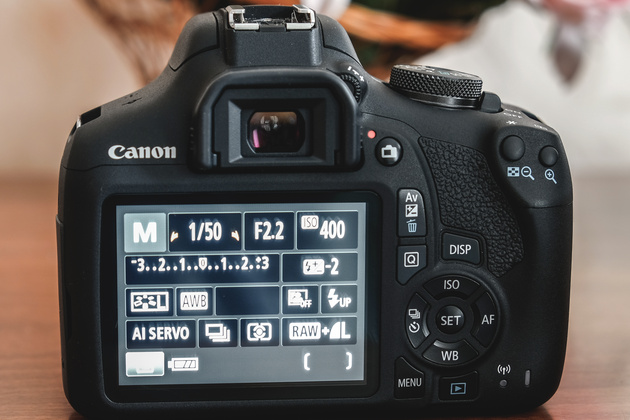Getting to know the camera
Get price Canon EOS 2000D At the end of February 2018, Canon released two new entry-level SLR cameras - the EOS 2000D and EOS 4000D . These models are aimed at obtaining high-quality images without any work and quick publication of the footage on the Web. And both have a very low cost for SLR cameras.Canon EOS 2000D / EF-S 10-18mm f / 4.5-5.6 IS STM Settings: ISO 100, F9, 1/80 s, 18.0 mm equiv.
Earlier, we tested the youngest model in the updated line of entry-level SLR cameras - Canon EOS 4000D, which replaced the Canon EOS 1300D. Now it's time to get to know the 2000D. This camera differs from the 4000D in a higher resolution image sensor - 24.1 megapixels instead of 18 megapixels, the presence of a wireless NFC module and some other interesting features.
Shooting a Canon EOS 2000D is as easy as shooting a smartphone or compact camera. Moreover, it has a number of significant advantages over the latter. Among them: the ability to receive higher quality images due to the large CMOS sensor with a size of 22.3x14.9 mm; compatibility with interchangeable lenses for full-frame and “cropped” Canon cameras and with external flashes, the presence of manual settings for creative thoughtful work, while being affordable and easy to use.
Appearance and specifications
Externally and in terms of performance, the Canon EOS 2000D is a more advanced version of the 4000D. It has the same matte plastic case with rubberized inserts, the same as the younger model, the DIGIC 4+ processor and the same burst speed. But at the same time, there are some important differences between them in technical specifications and a set of buttons, connectors, functions and shooting modes:| Canon EOS 2000D | Canon EOS 4000D |
| Image sensor with a resolution of 24.1 megapixel | Image sensor with a resolution of 18 Mn |
| Metal mount | Plastic bayonet mount |
| 3.0-inch (7.5 cm) LCD screen with a resolution of approximately 920 thousand pixels | 2.7-inch (6.8 cm) LCD screen with a resolution of approximately 230 thousand pixels |
| Viewfinder with smooth diopter adjustment | Fixed diopter adjustment viewfinder |
| There is a shooting mode "No flash" | No “No flash” shooting mode |
| Built-in flash rises automatically | Built-in flash only lifts manually |
| There is a button for raising the built-in flash | No button for raising the built-in flash |
| Wi-Fi and NFC | Wifi |
| Remote camera control using an RS-60E3 cable or via a mobile device | Remote camera control only through a mobile device |
| Turn on / off the camera using a separate lever | Turning the camera on / off using the mode dial |
The battery and memory compartments are under a common cover on the bottom of the camera. A tripod socket is located on the axis of the lens.
USB for connecting to a computer, mini-HDMI video output, as well as a 3.5 mm jack for connecting a remote control (another difference from the EOS 4000D, where there was no such jack) are hidden under a flap on the left side of the case.
The main menu of the camera is well thought out. It is divided into several tabs: for setting shooting parameters, viewing mode and general settings. Depending on the selected shooting mode, the number of tabs varies. The logic of organizing the menu is clear, finding the right item is not difficult.


